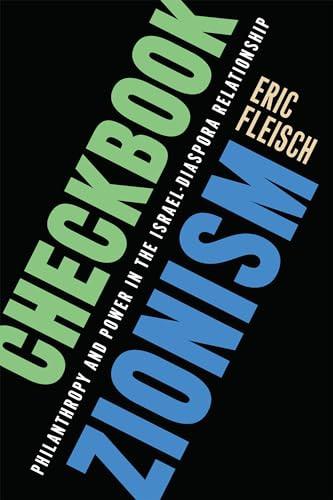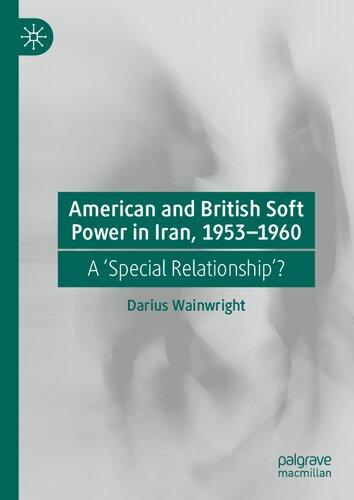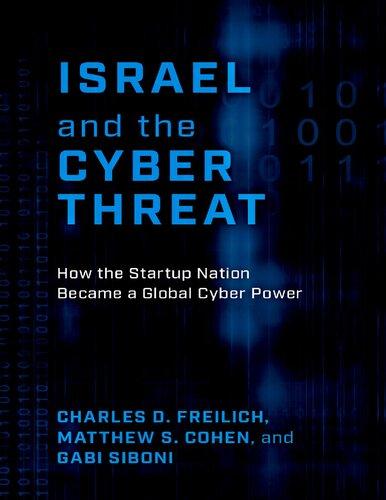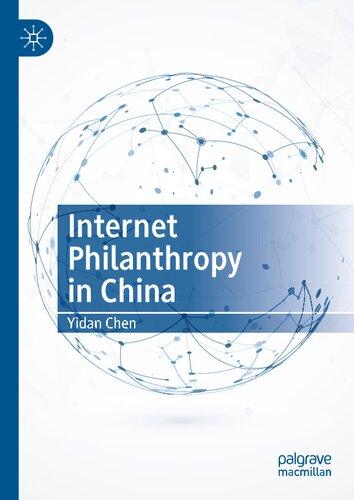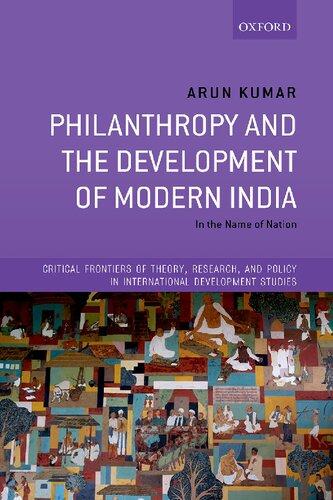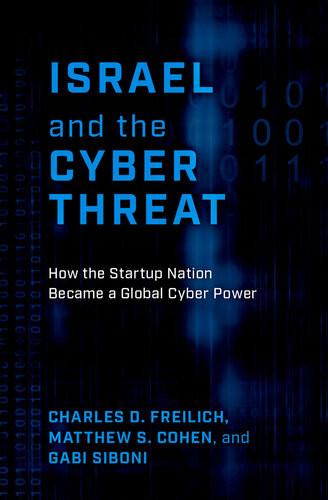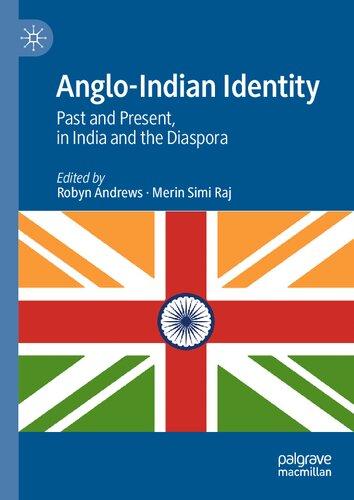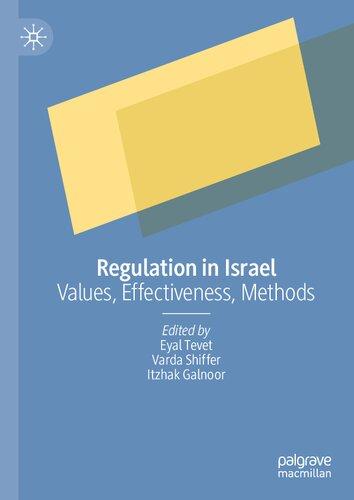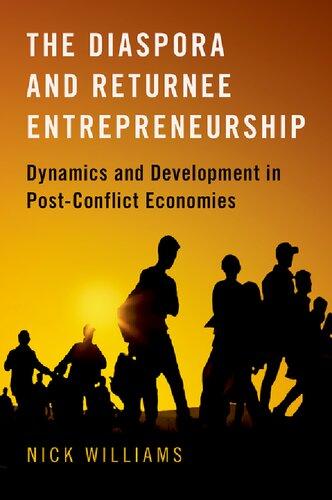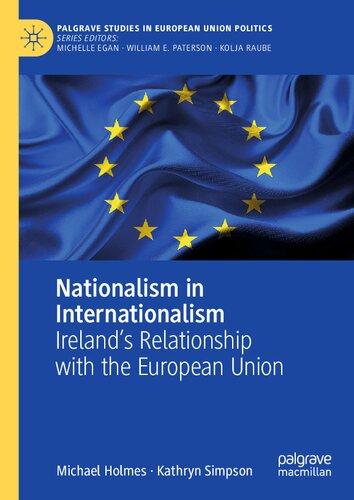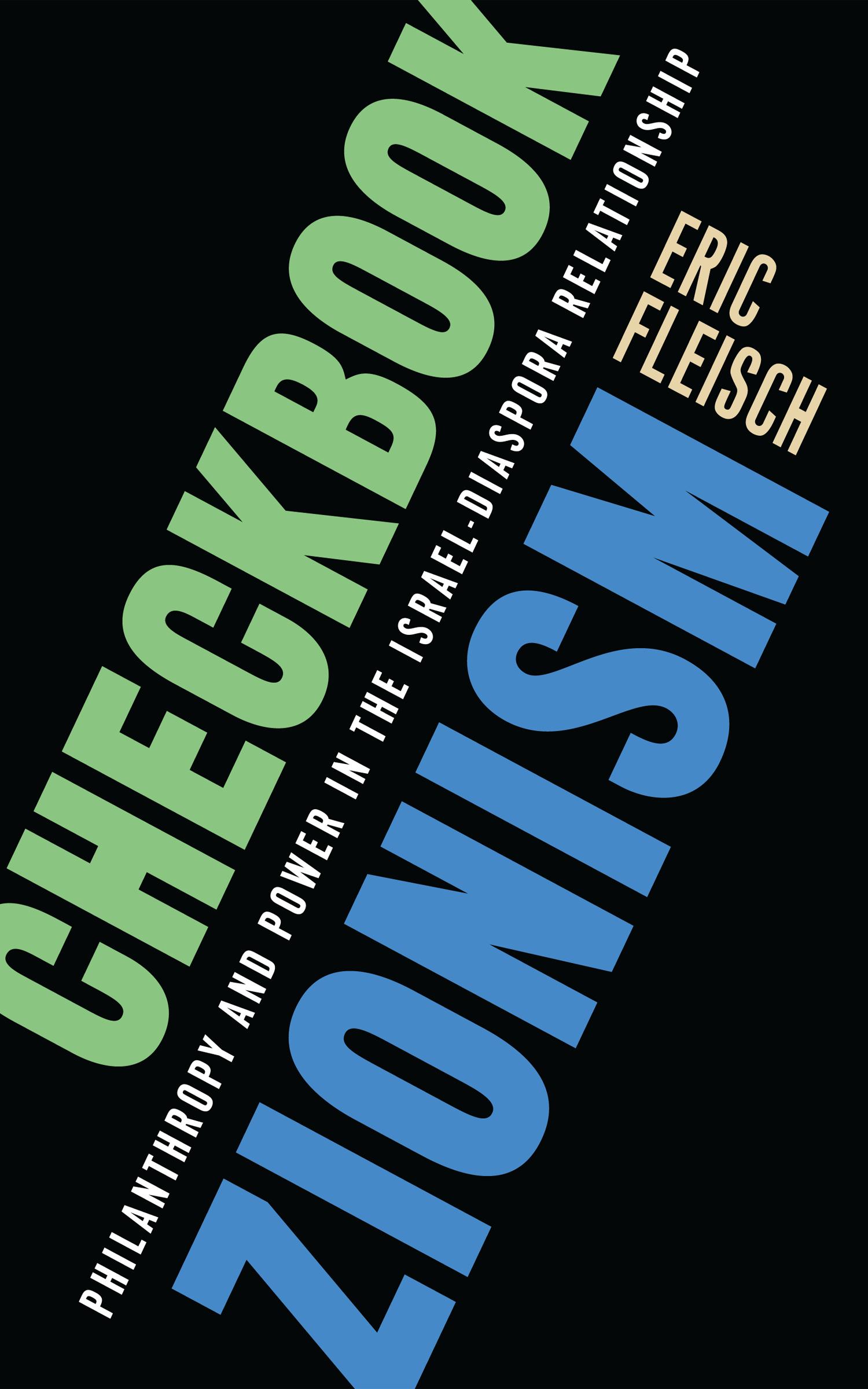Checkbook Zionism •
Philanthropy and Power in the
Israel-Diaspora Relationship
E ric F leisch
rutgers university press
new brunswick, camden, and newark, new jersey
london and oxford
Rutgers University Press is a department of Rutgers, The State University of New Jersey, one of the leading public research universities in the nation. By publishing worldwide, it furthers the University’s mission of dedication to excellence in teaching, scholarship, research, and clinical care.
Library of Congress Cataloging-in-Publication Data
Names: Fleisch, Eric, 1975– author.
Title: Checkbook Zionism: philanthropy and power in the Israel-Diaspora relationship / Eric Fleisch.
Description: New Brunswick: Rutgers University Press, [2024] | Includes bibliographical references and index.
Identifiers: LCCN 2023018809 | ISBN 9781978819948 (paperback) | ISBN 9781978819955 (hardback) | ISBN 9781978819962 (epub) | ISBN 9781978819986 (pdf)
Subjects: LCSH: Zionism—United States—History. | Jews—United States—Attitudes toward Israel. | Jews—United States— Charities. | Israel and the diaspora. | United States—Ethnic relations.
Classification: LCC DS149.5.U6 F54 2024 | DDC 320.540956940973— dc23/eng/20230427
LC record available at https:// lccn loc gov/2023018809
A British Cataloging-in-Publication record for this book is available from the British Library.
Copyright © 2024 by Eric Fleisch
All rights reserved
No part of this book may be reproduced or utilized in any form or by any means, electronic or mechanical, or by any information storage and retrieval system, without written permission from the publisher. Please contact Rutgers University Press, 106 Somerset Street, New Brunswick, NJ 08901. The only exception to this prohibition is “fair use” as defined by U.S. copyright law.
References to internet websites (URLs) were accurate at the time of writing. Neither the author nor Rutgers University Press is responsible for URLs that may have expired or changed since the manuscript was prepared.
The paper used in this publication meets the requirements of the American National Standard for Information Sciences—Permanence of Paper for Printed Library Materials, ANSI Z39.48–1992.
rutgersuniversitypress.org
For Oren, Eli, and Emmett who light up my world.
Acknowledgments 187 Notes 189
Selected Bibliography 219 Index 229
Abbreviations
ABI American-born Israelis
AFNCI American Friends of New Communities in Israel
AFPI American Fund for Palestine Institutions
APN Americans for Peace Now
CCA Committee for Control and Authorization of Campaigns
CJF Council of Jewish Federations
CSO Civil Society Organization
FAZ Federation of American Zionists
FCII Federated Council of Israel Institutions
ICDF Israel Community Development Fund
IEC Israel Emergency Campaign
IEF Israel Education Fund
JDC Joint Distribution Committee
JFNA Jewish Federations of North America
JNF Jewish National Fund
NGO nongovernmental organization
NIF New Israel Fund
OIF One Israel Fund
ONAD Overseas Needs Assessment and Distribution Committee
PEC Palestine Economic Corporation
PEF Palestine Endowment Fund
RHR Rabbis for Human Rights
RHR-NA Rabbis for Human Rights-North America
SJS Sheikh Jarrah Solidarity
UIA United Israel Appeal
UJA United Jewish Appeal
UJC United Jewish Communities
WZO World Zionist Organization
ZOA Zionist Organization of America
Checkbook Zionism •
Introduction
There is a satirical but telling scene in the classic 1964 Israeli film Sallah Shabati. Several halutzim are planting trees in an area slated by the Jewish National Fund (JNF) to become a forest. While they are hoeing and digging, a man working for the JNF drives up the dirt path in a car, takes a sign out of the car reading “Simon Birnbaum Forest New York, NY,” and hammers it into the ground next to a newly planted tree. Just as he finishes, another car pulls up chauffeuring a wealthy American couple. The Americans, ill dressed for the rugged terrain, get out of the car and awkwardly follow the JNF officer to the tree. The officer says in broken English, “Mrs. and Mr. Birnbaum. This is your forest!” The Americans look admiringly at the tree and all of the halutzim planting more like it, appear pleased, snap some pictures, and then get back into their car and drive away. No sooner than they are out of sight does the JNF officer take down the sign with the Birnbaums’ name on it and hammers in a sign next to the same tree that says “Mrs. Pearl Sonnenschein Forest Detroit.” A moment later, the Sonnenscheins also drive up, are also greeted by the JNF officer welcoming them to “their” forest in the same broken English, and are also pleased to be seeing what they are making possible through their generosity.1
The scene parodies a peculiar dynamic often at play in relationships between those living in a given “homeland” (be it real or imagined) and their associated diaspora populations. On the surface, the relationship appears to be between well-meaning supporters from afar wanting to aid financially in the development of their homeland and those on the ground in the homeland happy to receive donations. But the subtext of the interaction tells a very di fferent story. Though we do not know how the JNF was going to actually use the funds donated by the Birnbaums and Sonnenscheins, a few points can be inferred: (1) The funds were not going to be used as the donors thought, (2) the donors would almost certainly
not be consulted on their actual use, and (3) the recipient JNF officer did not seem to have any problems with deceiving the donors.
What might explain what is really going on here behind the curtain?
One might think that needy recipients—of which Israelis in the 1950s certainly were—principally would appreciate the help (and, secondarily, would hope that the donor would give again in the future). What, then, does it say that the JNF officer does not have any qualms about manipulating the seemingly wellmeaning donors? The officer, most likely, would go to such lengths of acting unethically and—maybe even more importantly—possibly jeopardizing the relationships only if he felt very strongly that he did not want the donors to be involved in deciding how the money was actually to be used.
But why might he feel so strongly? Is it that he did not trust donors’ ability to accurately evaluate how best to use the money? Perhaps, yes.
But if that were the case, why would the officer not be more forthright and tactfully explain the reason why Israelis believed that they, as the people who lived there, naturally had a clearer understanding of where money was most needed? Genuinely well-meaning donors might actually respond well to such an honest assessment. Maybe it was because the officer’s concerns were deeper than just having low confidence in the donors’ judgment.
What if his real issue was that he questioned whether the donors’ motives were truly as “well-meaning” as they appeared? What if, instead of being chiefly driven by an altruistic desire to help, donors wanted the money they contributed to be used for some other purpose that was more in line with their own visions for what Israel’s priorities should be—but not necessarily what Israel actually needed? In other words, maybe planting new forests fit with the donors’ ideas for what the new state most needed, but according to those who lived there it did not.
If this were indeed the case, one could understand why the JNF could want to maintain control over the money badly enough that its officers would be willing to lie to donors.
These issues—of communication and control, divergent agendas and sometime deception—have classically been central features of the American JewishIsraeli relationship parodied in Sallah Shabati, but they apply far beyond this one case to homeland-diaspora relationships all over the world. Often, despite a veneer of partnership and collaboration in relationships between diaspora populations donating money to their homeland and those in the homeland receiving it, these types of dynamics linger right below the surface.
The Challenges and Opportunities of Diaspora Philanthropy
The nature of philanthropic relationships between homelands and diasporas has become increasingly impor tant in international relations in the emerging twenty-
first-century global picture.2 With human migration at an all-time high, 3 and with communities of migrant expatriates not necessarily rapidly assimilating into the majority cultures where they live,4 diasporas are springing up and taking root all over the globe.
Over time, it is not uncommon for diasporans to attain greater wealth than those remaining in their homelands and still retain an ongoing desire to “help” those back in the “old country.” One of the chief ways many diasporas do so is through philanthropy—mobilizing to bear some of the financial burden of their often less developed homeland.5
Depending on the sizes of homeland and diaspora populations and relative economic clout, overseas donation totals can have an outsized proportion of influence on a still- emerging economy. Therefore, whoever gets to decide how to allocate funds coming in from diasporas can hold considerable sway in shaping how a homeland develops—what work should be prioritized, according to which agendas, and so forth.6 Determining exactly who makes expenditure decisions is of great importance.
States with diasporas usually understand the unique opportunity that can come with having populations living outside of their geographical boundaries who are specifically dedicated to supporting their state’s betterment. World Bank economist Dilip Ratha argued in 2011 that governments should view their diasporas as “an untapped pool of oil,” ripe to be cultivated to aid in their future development.7 While it is true that ethnically linked diasporas are not the only source of foreign financial assistance available for developing societies, unlike with most other forms of foreign investment/support that are largely initiated for the purpose of bringing the investor/investor country financial and/or strategic benefits, diaspora support for the development of their homeland is thought, at least in part, to be typically motivated by donors holding altruistic concern for and/or identification with the homeland.8
On the one hand, most states with significant diaspora populations have recognized this and attempted, on some level, to mobilize diaspora philanthropic support—both for the extra stream of funding itself but also specifically for the relatively fewer constraints they expect than are attached to other forms of foreign investment and aid.9 Scholars have noted the uptick in countries attempting to cultivate diaspora involvement. As Kathleen Newland, Aaron Terrazas, and Roberto Munster explain, “Migrant-sending countries are trying to integrate their native citizens abroad into efforts to promote development at home” because they are “increasingly recognizing the development potential of their diasporas.10
But on the other hand, Jennifer Brinkerhoff, perhaps the leading scholar on diaspora philanthropy, offers a more cautious perspective. She argues that there is a broad range of attitudes home countries hold to their diasporas, spanning from actively seeking their involvement to ignoring them and to seeing their
activity as inappropriately politically motivated, or worse.11 Some states worry that their diasporas could use the leverage donated money gives them to push for agendas that may not be in the home country’s best interest.
So how true might Brinkerhoff’s assessment be? Diasporans donating to their homeland indeed are giving of themselves and mostly claim to be doing so, in part, out of love or patriotism. However, the literature suggests that the stated altruistic intent by diaspora donors may not be quite as good for the homelands as it sounds. For one, diaspora donors are usually motivated, in part, by other, less altruistic motivations as well (e.g., achieving personal gain or status).12 Matthias Lücke, Omar Mahmoud Toman, and Peuker Christian have termed this phenomenon “impure altruism.”13 But perhaps more importantly, as numerous scholars have argued, even if diaspora populations truly believe they are giving philanthropy with the “best interest” of their homeland in mind, those living in the homeland may have di fferent ideas of what “best interest” means.14
One way this sometimes manifests, for example, is when certain groups within a society that do not represent mainstream opinions are able to successfully connect with affluent like-minded supporters abroad to bankroll and empower their more fringe ideas.15 As Johnson, Johnson, and Kingman explain, when, in such cases, priorities of homelands and diasporas are “not fully congruent . . . , heavy reliance on foreign donations . . . [can] raise issues of legitimacy agenda setting, and public perception.”16 Is it true when empowered, engaged nonnative donors choose to get involved in what might other wise be regarded as the internal affairs of another state that they are in some way undermining that state’s sovereignty—especially if they are pushing agendas not necessarily shared by some sufficient part of a state’s citizens?
What happens (or should happen) in these cases when the priorities of a homeland and its diaspora donors diverge? Who should determine how donated money to a sovereign country should be spent: The givers from abroad? Those affected by the spending decisions on the ground? The two in concert? And, if so, on what basis should the sides mediate their differences?
On one extreme of the argument is the idea that donors should be understood, more or less, like consumers: they should get to decide how their hard-earned money is spent, as they would with any other purchasing decision. In this formulation, donors choose projects, watch budgets, monitor outcomes, and continually evaluate the merits of their ongoing “investment” in these projects.17 The opposite extreme holds that only those living in a country should be entitled to make impor tant decisions that impact the future of that country. In this view, the interests of foreign donors are regarded as irrelevant; even more, overseas donors using their philanthropy to push along agendas in a country other than their own is tantamount to inappropriate foreign influence in a sovereign state that should not be tolerated.18
These questions have far-reaching effects on both the self-identities of homeland and diaspora communities alike, as well as the relationship between the two. But unfortunately, since research on diaspora philanthropy to date has been sparse—especially regarding issues like power, control, and state sovereignty19 there are not yet well-developed theoretical frameworks to draw from in categorizing the contours of philanthropic relations between homelands and diasporas. Those scholars who have broadly surveyed the phenomenon of diaspora philanthropy recognize that the field is, as Brinkerhoff put it, “in its infancy” or, as Johnson says, is “one of the least understood subfields of philanthropy.”20
In the absence of a more well-developed literature, therefore, it is helpful to borrow ideas about partnership relationships from the related field of international development.
Typically, international development relationships are predicated on wealthier “developed” states providing funding for projects in poorer “developing” states.21 Some in the field argue that though the agendas of funding organizations likely differ in key ways from states receiving aid, there are nonetheless myriad potential (and actualized) opportunities for building trust and mutually beneficial relationships between the sides.22
Other perspectives assert, on the other hand, that the inherent power asymmetries between the two sides make partnership difficult and typically lead to wealthier actors using their financial leverage specifically to advance proprietary agendas not necessarily aligned with the best interests of the recipient countries,23 or even for the express purpose of institutionalizing power discrepancies longer term.24
Willem Elbers and Lau Schulpen explain that a functioning, mutually beneficial partnership would theoretically include features such as “shared goals, balance of power, shared responsibilities, trust, mutual respect and accountability, reflecting the ideal of a mutually dependent relationship based on equality.”25 However, numerous scholars in the field usually see these types of relationships as illusory. Sally Reith, for example, echoing a common perspective in the field, identifies partnership in this context as “something of a Trojan Horse, disguising the reality of the complex relationships in imbalances of power and inequality, often through the control and flow of money.”26 Elbers goes even further, arguing that rather than “partnership,” a more appropriate characterization of the relationship between donor populations and recipient societies is “partnership paradox,” in which monied stakeholders maintain or exacerbate a gap between principles and practices of actual partnership.27
This book builds on the ideas and contributes to a new literature within diaspora studies on what partnership and power sharing look like in philanthropic relationships between homelands and diasporas. Through an analysis of a single, specific homeland-diaspora relationship, that between American Jews and
Israelis, this book looks at these questions of money, partnership, influence, and control, offering ideas that are applicable to such relationships across the world.
The Case of A merican Jews and Israelis
In a number of ways, the Israel-diaspora relationship is an excellent—and arguably even an ideal—window into how these larger issues play out in philanthropic relationships between homelands and diaspora populations. On the one hand, due to both its historical longevity and the depth of affinity diasporans hold toward the homeland, the Israel-diaspora relationship has been pointed to as perhaps the paradigmatic homeland-diaspora relationship.28 But on the other, the case of the Israel-diaspora relationship is somewhat unique in the level of maturation it has reached. The relationship is now between a diaspora community among the wealthiest, most established, and most integrated in the world and a modern, developed state—which raises the questions of how a relationship might develop after the inherent dynamics of haves versus have-nots has receded. Fi nally, with a long modern history of over a hundred years, this relationship offers the opportunity to be scrutinized for how numerous factors (motivations, behav ior norms, communication patterns, structural mechanisms, etc.) have developed over time.
Background
Zionism had originally imagined a Jewish society created exclusively by hardworking, entrepreneurial halutzim on the ground in Palestine, but the truth is that Israel was, in large measure, built by diaspora donations. Halutzim did the physical construction, but the bill for society building was simply more than the cash-strapped olim could foot. Fortunately for Zionist settlers—at least from a pragmatic standpoint—hundreds of thousands or more of diaspora Jews saw the need and were eager to support the unfolding drama of Jewish history from a comfortable distance by financially supporting the building of Zion. Indeed from the beginnings of the Zionist settlement in Palestine in the late nineteenth century through the present, American Jews—the largest and most affluent diaspora community—have donated more than $30 billion to support projects in Israel.29 Collectively, the funds have had a major impact on nearly every sector of Israeli society throughout the years: from building of infrastructure and absorbing immigrants early on to ongoing economic and civil society development through the present.30 This has given American Jews the opportunity to leave their fingerprints all over the Israeli state and has raised concerns for Israelis about inappropriate outside influence. This relationship pattern of Jews from abroad funding Israel’s development has sometimes been derisively referred to as Checkbook Zionism.
Israelis long had a complicated perspective on the Checkbook Zionism relationship formula. It was true that money was deeply important to the young state, but the point of Zionism was to be a solution to the problems of diaspora life, not a movement existing alongside it.31 The spartan realities of the Zionist settlement project and the early Israeli state, however, necessitated that the state’s leaders accept and, even more, actively seek out money from American Jews. And so they put on a good face, kept their often disparaging opinions about diaspora Jews to themselves,32 and placated their benefactors enough to keep the funds flowing.33 The one red line they maintained was that they would not accept American Jews having a significant voice in the conversation over how to use the funds. In theory, they would have happily welcomed American Jews as equal participants in planning Israel’s development if the Americans immigrated. But in the opinion of Israelis, so long as Americans could not be inconvenienced enough to surrender the comforts of their lives and truly be Zionists by providing the young state the manpower it so badly needed, they should be due neither full participation nor even full respect. To Israelis, the term “Checkbook Zionism” was therefore a derogatory label they used among themselves as a way to denigrate Americans’ insufficient participation in the “real work” of Zionism.34
The mainstream American perspective on the Checkbook Zionism relationship was less complicated. Simply put, American Jews typically saw no shame in their role. Most believed giving with no intention of immigrating was a perfectly legitimate way of expressing their support, especially when Israel so badly needed money and they had the means to provide it.35 They regarded the decision to immigrate to Israel as a personal choice—not an obligation—for Jews. Most reasoned, furthermore, that it was rather foolish to abandon the comfort and acceptance they believed they had achieved as American Jews in favor of picking up and moving to a small, underdeveloped piece of land in the Middle East—not to mention that it could risk undermining the status they had worked so hard to achieve as loyal Americans.36 Therefore, most believed that if they cared about Israel, it was perfectly legitimate and maybe even better to stay put and write checks.37
This book’s study of power sharing in the Israeli American Jewish diaspora is both historical and contemporary. What started as a partnership of necessity between the doers and the absentee payers—the Zionists and the Checkbook Zionists—took shape in the first decades of the twentieth century and first began to seriously falter only in the 1980s. What has risen in its wake has, to date, received very little attention.
At the core of the inquiry are a number of seemingly technical questions: What are the priorities of the various players? How do they communicate? Who
sets the narrative? How and why do donors stay engaged? But it also hones in on larger questions surrounding money, control, and sovereignty: Can some kind of equal “partnership” exist in which both Americans and Israelis are adequately competent and deemed so? Should there be partnership? Which agendas are legitimate for diasporas to support and which are not? Does homeland “belong” to only those who live there? Do the sides see merit in the relationship remaining in a similar state to how it has been? If so, what does that mean for how each views both its role and that of its counterpart in the relationship?
Structure and Methodology
Part I of this book documents and recounts the history of the rise and fall of the Checkbook Zionist relationship—what it was, how it operated, and why it declined. It focuses on two principles at the heart of the relationship: (1) use of collective or “federated” philanthropy as the best way for organizing donors and addressing communal priorities and (2) a built-in deference—an almost automatic trust that American Jewish leaders had in their counter parts in Israel.
Chapter 1 examines these ideas from an institutional perspective. It looks at the vast organizational infrastructure American Jews and Israelis collectively built in the first half of the twentieth century in order to facilitate an efficient and plentiful flow of donations for Israel. It explains the rise of federation as a principle and how it helped transform a haphazard hodgepodge of giving channels into an efficient fund raising machine (headed by the United Jewish Appeal [UJA] in America and the Jewish Agency in Israel) that would be instrumental in building impor tant components of Israeli society and in the process instill ideas of collective action, collective planning, and mandatory personal obligation to give within American Jewry.38
Chapter 2 looks at Checkbook Zionism from a cultural perspective, investigating ideas of priorities, collaboration, and trust. It tells the story of two competing philosophies over how the diaspora and Israel should share power in allocating donated funds. The ideas—each championed by a leading voice from the Zionist movement of the day—were premised on differing understandings of the rights of the diaspora to have a say over the use of the money that they contributed. The chapter recounts the process through which the idea pushed by Chaim Weizmann—calling for de facto American Jewish deference to Israeli decision makers—ultimately became the dominant viewpoint. It then details the meticulous process that American and Israeli proponents of Weizmann’s ideas undertook to entrench them within the UJA–Jewish Agency system.
Chapter 3 begins at the peak of Checkbook Zionism when federation and deference were celebrated norms underlaying the fund raising enterprise that brought in huge sums annually (the UJA–Jewish Agency structure controlled over 80 percent of American Jewish donations for Israel)39 and vested decisionmaking authority in the hands of Israelis, with only rare public criticisms from
Americans.40 The chapter traces the swift decline of the system explaining how cracks in the relationship increasingly developed from the 1967 War on—and in a pronounced way in the 1980s and early 1990s—with the result being a drop in UJA campaign receipts year after year. Some commentators viewed the decline in giving numbers— despite growing American Jewish affluence—as a sign of diminishing American interest in Israel overall.41 The chapter argues that a closer look reveals that though the traditional giving numbers were indeed falling, a much larger change was afoot. Americans were not less interested in Israel but rather were simply changing how they gave.42 Rather than giving through the traditional organizational channels, increasing numbers of American Jews were choosing to donate to new organizations that afforded them more opportunity to decide how their funds would be used. Every year, dozens of additional American Jewish organizations collecting money for projects in Israel first appeared on the scene to rival the traditional centralized collection campaigns.43 The diversity of possible organizations and the opportunities for earmarking donations that they introduced allowed Americans to choose the causes in Israel they wanted to help bankroll much more directly. By 2018, the number of organizations raising funds for projects in Israel had reached nearly a thousand and covered every conceivable charitable stratum—from mainstream causes like hospitals, museums, yeshivot, and universities to more boutique causes like guide dogs for the blind, oceanography, orphanages, cystic fibrosis research, missile defense, lacrosse leagues, dentistry, and many others.44 In an apparent departure from the years of Checkbook Zionism, American Jews were increasingly exercising choice over where to direct their money from the many new giving options.
The second half of the book explores power sharing in the philanthropic relationship in the wake of these major transitions. For as little as the history of philanthropy and power sharing have received adequate scholarly treatment, the years since the 1990s have received even less, likely due to how unwieldy the field became. The fact that as of 2020 there were thousands of distinct philanthropic channels means that old analyses of the philanthropic relationship that were largely based on the single UJA–Jewish Agency channel of philanthropy to Israel could no longer be considered valid. Chapters 4 to 7 sort through the confusion to explore how power is shared in a new and vastly di fferent environment and evaluate the degree to which the characteristics of the Checkbook Zionism of old might still remain.
The task of sorting through the changed philanthropic environment to study power sharing is more than daunting. The two large institutions that classically anchored Checkbook Zionism (the UJA and the Jewish Agency) have receded from importance and been supplanted by hundreds if not thousands of institutional actors. The solution this study used to work around the barrier of the enormity of the field was to identify a number of case studies from the current field of nongovernmental organizations (NGOs) in Israel supported heavi ly by
American Jews and to analyze power-sharing dynamics between case study organizations and their funders.
In order to best achieve an “apples to apples comparison” in what is a very large field of organizations and donors, it was determined that the sample of selected organizations should ideally all do work on the same general issue; and that issue should be one that (1) draws a broad variety of organizations (in form, ideology, strategies, etc.) and (2) attracts the support of American Jews of all kinds.
The issue identified as best meeting these criteria was the debate over Israel’s West Bank settlement project. Numerous Israeli NGOs do work related to the settlement issue, most of which have impor tant philanthropic support from a passionate American donor base. From the large pool of organizations working on settlement, sixteen were selected for in-depth case examination. Collectively the selected organizations represent ideological diversity— eight support the health/expansion of the settlement project in some way, and eight oppose or work to mitigate the effects of the settlements. Some are old. Some are new. Some are big. Some are small. They use a full variety of advocacy techniques, including lobbying, media work, protest, and classic Israeli grassroots activism. All have in common that they seek and rely on support from American Jews for their vitality and, in some cases, their very survival.
For each of the organizations, issues of power sharing were studied closely. Research methods included field observation, document analy sis, and over a hundred interviews with NGO leaders, activists, and a subset of their donors. Main research questions included the following: How do NGOs and their donors regard one another? In the opinion of Israelis, does the migration of American donors toward more donor-driven philanthropic vehicles suggest that they want an enhanced role in decision making over use of funds beyond what American Jews had formerly wanted? And, if so, how receptive are the Israelis to this?
Chapters 4 to 7 analyze the nature of their power-sharing dynamics from three di fferent perspectives, with an eye to how much the supposed revolution in the philanthropic relationship is indeed that.
Chapter 4 introduces a number of tools and frames necessary for understanding the contemporary analysis presented in the subsequent chapters, including a primer on new forms of philanthropic organization, relevant American tax law regarding overseas donations, Israeli NGO development, and brief introductions of the sixteen organizations in the sample.
The fact alone that as of 2007 American Jewish donors gave over 93 percent of total contributed funds to Israel through some kind of directed choice—be it giving to the general campaigns of organizations they have handpicked themselves (“new federated” relationships) or to specific projects within them (direct giving)—seems to confirm that Americans are interested in having some degree of say in how their donations are used in Israel.45 In 2014, more than half of all
American Jewish donations to Israel were through new federated relationships and another 25 to 35 percent were via direct giving relationships.46 While the degree to which the American principals in the new federated relationships attempt to exercise control over their donations is looked at in chapter 7, it is less clear how much American donors who are engaged in direct giving arrangements view their relationships with the NGOs they support through a frame of influence (e.g., as a struggle for influence, an abdication of influence, etc.). Classically, as sociologist Charles Liebman observed in his groundbreaking work on American Jews and Israel, Pressure without Sanctions: The Influence of World Jewry on Israeli Policy, American Jews did not view their relationships in this way. They maintained a much more hands-off relationship in how they supported Israel than in anything else they supported because, as Liebman noted, American Jews simply did not “regard Israel as a suitable object of . . . influence.” 47 While there have not been any comprehensive follow-ups to Liebman’s 1977 work, it remains to be seen how much this attitude has actually changed in the decades since.48
The original intent of this book had been to answer this question of how much Americans seek to exercise influence through their giving—as well as other key aspects of power sharing—by equally capturing the experiences and sentiments of all parties to these relationships. However, it became clear early on that there was a major methodological challenge to doing so, as Israeli organizations engaged in direct giving relationships do not publish the identities of their donors and are generally cautious about sharing such information. And though in the process of research each of the NGOs did share some contact information for a small portion of their donors, it was not a large enough data set collectively to be considered representative of the broader donor pool contributing to the organizations in this case study. So the question of how much the typical American Jewish donors giving directly want to use their donations as leverage to shape Israel is not known. Whatever donors’ experiences were captured could not be regarded as more than anecdotal.
However, there was a way around this methodological obstacle to still get at some of the most central aspects underlying the contemporary power-sharing relationship. In traditional Checkbook Zionism, Israelis mostly called the shots. Any changes to that relationship, therefore, would necessarily include the Israelis in positions of decision-making authority actively and knowingly—but not necessarily willingly—relinquishing some of their power to donors. In contrast to this study’s limited access to donors, it was able to identify and involve nearly all top leaders and fundraisers at each of the sixteen NGOs. Collectively, their experiences and impressions represented a comprehensive data set for this case. By looking at the experience of the Israeli principals at the NGOs, alone, therefore, one can see much about how power relationships may have changed, opinions of American Jews notwithstanding.
It is also impor tant to acknowledge that although the arguments made in this book often speak about American Jews broadly, the community is not, and never was, monolithic. Within the community, there has always been a broad range of observance, affiliation, identity, and feelings about Israel/Zionism. This study’s treatment of American Jewish behav ior and attitudes mostly focuses on macro observations and, as such, admittedly does not address much of the diversity and nuance that comprise the community.
Chapter 5 examines how willing Israelis are to consider changing the terms of the relationship with American donors. The question of Israeli willingness to even engage in a reconceptualization of the relationship, as mentioned, would be a necessary prerequisite to any significant changes actually taking place and is therefore a crucially impor tant component in evaluating the contemporary state of power sharing.
Chapter 6 builds on the conclusions from chapter 5. As it turns out, though there are caveats and conditions under which some Israelis would consider reevaluating power sharing, most Israeli interviewees indicated a strong desire to maintain the classic grip on decision-making power. In light of this, chapter 6 looks at how Israelis have attempted to hold on to their power in direct giving relationships—irrespective of what the Americans in the relationships choosing to give directly may actually want out of the relationships. It additionally assesses the degree to which the Israeli attempts to maintain power appear to be successful.
Chapter 7 looks at what encounters are like in “new federated” relationships— those between Israeli NGOs and American-based 501(c)(3) nonprofit donor organizations that collect money from (and purport to represent) American Jewish donors and allocate to the Israeli NGOs. Unlike the unidentifiable American donors involved in direct giving relationships, those making decisions for the American funding organizations are publicly identifiable and accordingly were recruited to participate in this study. This chapter is thus more able to pinpoint how and when the agendas of Americans and Israelis aligned and how and when they were at cross purposes and, in those instances, how tensions over influence and control were negotiated.
The book closes by offering hypotheses that address the trajectory of the powersharing relationship between American Jewish donors and Israeli activists as we begin the third decade of the twenty-first century. Explored questions include the following: What shape is this one specific relationship taking, and what can that teach more broadly about homeland-diaspora relationships going forward? Are American Jews still inadvertently acting like the Birnbaums and the Sonnenscheins from Sallah Shabati? Even though American Jews express increased interest in directing the use of their donations and have far more access to infor-
mation about Israel, are they still dependent on a version of Israel shown to them by Israeli fundraising professionals? And likewise, are Israelis still operating like the JNF representative in Sallah Shabati putting on a convincing enough show to woo well-meaning but still underinformed donors, and then essentially doing what they wish with the money they collect? The ideas it suggests will shed light on the dynamics of homeland-diaspora philanthropic relationships beyond this single case and indeed will contribute to a greater understanding of the increasingly prevalent and significant global trends around the growth of diasporas.
